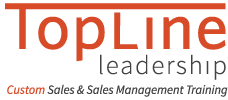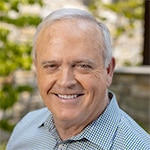Recently I was retained by a regional VP of sales for a large financial institution to evaluate the effectiveness of his team’s sale of investment advisory services provided to high-net-worth customers. He asked me to be a “mystery shopper,” and at his request, I met with one of his salespeople while posing as a high-net-worth customer considering the possibility of changing from my current financial advisor to another investment management firm.
Coincidentally, at the time I actually had a few concerns about my own personal financial advisor, and because I realized I might change firms as a result of my analysis, I told my client that in order to perform a realistic decision process, I would also meet with two of his company’s competitors. (It’s also why I asked to meet his best and most experienced advisor, figuring that’s who I’d want working for me should I decide to actually pick this firm.)
Over the next six weeks, I met as planned with the representatives of three different investment advisory firms, including one from my client’s firm. Each of the sales consultants was extremely effective at building rapport, making me feel comfortable, and creating a perception of caring.
Yet they all made the single most common mistake that salespeople make: They moved through the steps of their sales process—building trust, identifying needs, presenting their solutions, going for the close—without thinking about where I was in my decision-making process. They sold too fast. They put me on theirsales track, instead of joining me in mybuying process.
That’s why this book has the paradoxical title of “Slow Down, Sell Faster!” When you sell slower on each sales call—ask more questions and do many of the activities suggested in this book—your customers will buy faster. They will more fully recognize their needs and the urgency of those needs. The best solution (hopefully yours) will be more clearly defined and differentiated in ways the customer recognizes as important. It is this connection with the customer’s buying process that will differentiate you.
In this chapter, I want to talk in more detail about what I mean by saying these financial advisors sold too fast, discuss how customers buy, and present a new model of selling that matches the customer buying process.
How Selling Too Fast Causes Lost Sales
My first face-to-face meeting with my client’s investment advisor went as follows (the labels are mine, the actions were the advisor’s):
- Build trust: The advisor began by learning a bit about me, before sharing about himself, his money management background, education, etc. It was an effective opening.
- Identify needs: The advisor then asked me some questions. He learned about my financial goals, and that I was dissatisfied with the returns and performance achieved by my current financial advisor.
- Present solution overview: He explained that his firm’s approach is not to be market timers or “fad chasers,” and he told me about his firm’s investment model that minimizes risk while maximizing returns. I also learned that his approach to determining his clients’ needs was to create a Personal Wealth Plan based on my answers to questions such as: Where is my money now? Where would my financial assets be in retirement?
- Close for next step: The advisor then recommended we meet again in a few days, and asked that I bring account statements of my current investments.
Here are the five mistakes he made—all of which revolve around selling too fast:
- He didn’t delve into why I thought my returns with my current advisor were poor. If he had, I would have explained that over the previous eight years my portfolio hadn’t really changed all that much—that there had been little movement of assets from one investment type to another. My opinion was that my current advisor was lazy and took my account for granted. Had my client’s advisor asked the right questions, he would have gained deeper insight into my needs, and he would have been much more persuasive later during his solution presentation.
- Since he didn’t know about my current advisor’s laziness and slow response, he forfeited one of the most powerful tools a salesperson has: getting prospects to think about the possible negative consequences of not making a change. In this case, had he asked about what would happen if I did nothing, I would have thought about the effect of trusting my money to someone asleep at the switch, and about all the fear and uncertainty which that would have entailed. That would have helped me put a face on my future.
- He didn’t try to find out about my second need. Usually, the first topic discussed with a prospective client is his or her greatest concern at that time; it’s the need that’s most developed from the customer’s perspective, and the reason the customer agreed to meet with you. Getting prospects to realize they have more than one need for change creates a greater sense of urgency , which adds greater potential value to the solution you will eventually offer.
- He didn’t ask me about my buying process—how I would make my decision regarding who would get my business. So he didn’t learn that I was going to be interviewing two of his competitors. He lost out on an opportunity to start answering my question, “Why should I chose you,” before I asked it of him.
- He didn’t ask me who else would be involved in my decision. While I could have been acting alone, had the advisor asked, he would have learned that my wife is a valued partner in our financial decisions. He could have then sped up our buying decision by slowing down his sales pitch and requesting a follow-up meeting with both me and my wife.
Every salesperson wants to sell more. We all want to make more money and gain recognition for peak performance. As my experience with the financial advisor illustrates, the way to do this is to slow down.

